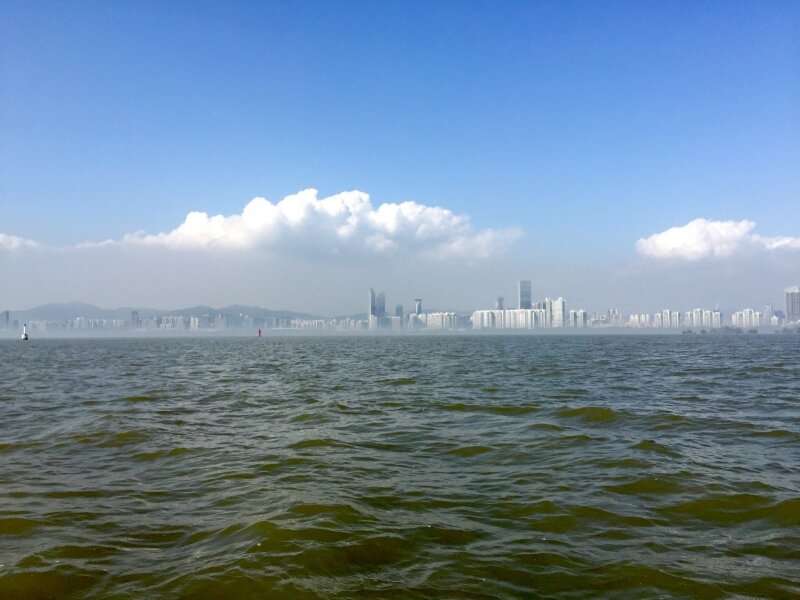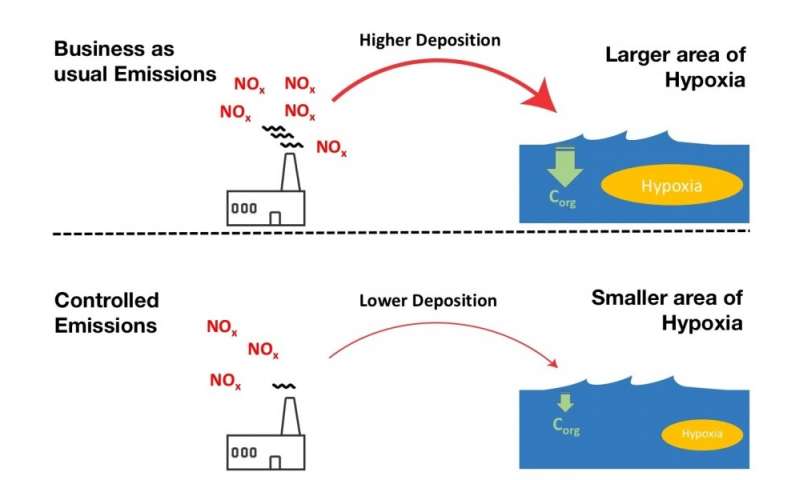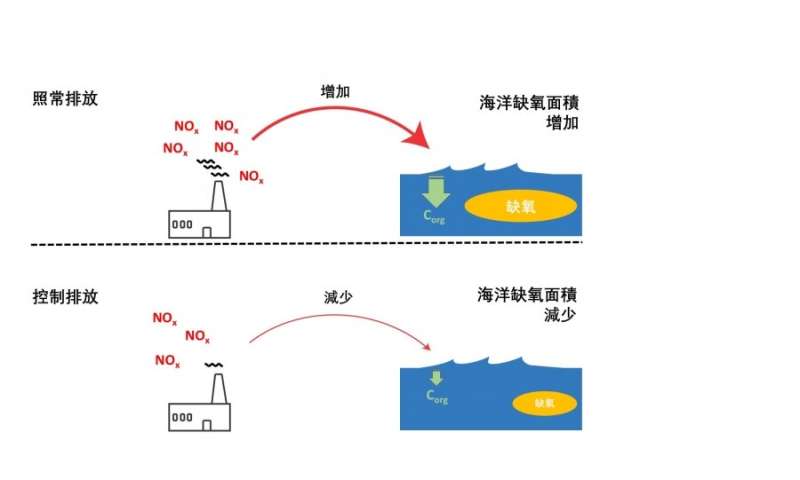Control of anthropogenic emissions can improve water quality in coastal seas

A new study highlights the importance of reducing fossil fuel combustion, not only to curb the trend of global warming, but also to improve the quality of China's coastal waters. The findings were recently published in Environmental Science & Technology. The study was led by MPhil student Miss Yu Yan Yau and supervised by Dr. Benoit Thibodeau from the Department of Earth Sciences and the Swire Institute of Marine Science, the University of Hong Kong (HKU).
Fossil fuel burning is strongly associated with global warming. However, atmospheric and marine pollution linked to energy production, transportation and industrial activity are often overlooked. Production of nitrogen oxides (NOx) emissions via fossil fuel burning and the manufacture of fertilizer pollutes the atmosphere and leads to the formation of ground-level ozone, smog, acid rain and contributes to global warming through the greenhouse effect. Moreover, nitrogen is a natural fertilizer, and thus, when atmospheric nitrogen oxides deposit in the water, it can also have a fertilizing effect. This fertilizing effect can lead to eutrophication, a chain reaction starting with the addition of nutrients (here, nitrogen oxides) that enhance the production of algae, which, in turn, die and sink to the bottom of the ocean and decompose. During the decomposition of this organic material, oxygen is consumed from the water, lowering the dissolved oxygen content at the bottom of the ocean. Constant reductions of dissolved oxygen scan lead to hypoxia, a level of oxygenation that is too low for most organisms to sustain their normal activities.
The study used trends projected by the Intergovernmental Panel on Climate Change (IPCC) in atmospheric emissions of NOx coupled with a biogeochemical model to estimate the impact of the deposition of nitrogen oxides in four major Chinese coastal seas: The South China Sea, the East China Sea, the Yellow Sea and the Bohai Sea. The researchers found that although atmospheric deposition is not as important as riverine nitrogen input, it can still fuel up to 15% of the total amount of organic matter found at the bottom of the ocean, increasing significantly (up to 5%) the area of hypoxia. The good news is that it also found that a reduction of emissions can lead to a significant decrease of hypoxic zones, and that the South China Sea is the most sensitive area to nitrogen input.
-

Illustration of the chain of events from the emissions to the generation of hypoxia. Credit: Environmental Science & Technology -

Illustration of the chain of events from the emissions to the generation of hypoxia. Credit: Environmental Science & Technology
"I hope our study brings more attention to the potential benefit of reducing fossil fuel burning on human and ecosystem health, but also on local economic activities like fisheries, which are severely affected by hypoxia," said Miss Yau.
"Low levels of oxygen are observed in many coastal seas around the world and it is important to find better ways to tackle this problem. While we understand that sewage and nutrient input from the Pearl River drive most of the hypoxia in the Greater Bay Area, we observe low levels of oxygen in regions that are not directly under the influence of these sources. Thus, it is important to investigate the impact of atmospheric deposition more locally," Dr. Thibodeau remarked.
More information: Yu Yan Yau et al. Quantifying the Impact of Anthropogenic Atmospheric Nitrogen Deposition on the Generation of Hypoxia under Future Emission Scenarios in Chinese Coastal Waters, Environmental Science & Technology (2020). DOI: 10.1021/acs.est.0c00706
Journal information: Environmental Science & Technology
Provided by The University of Hong Kong





















